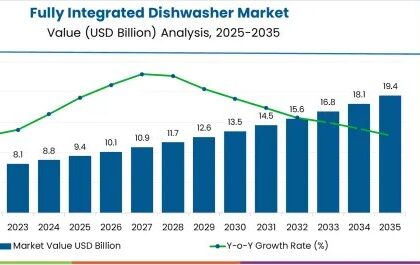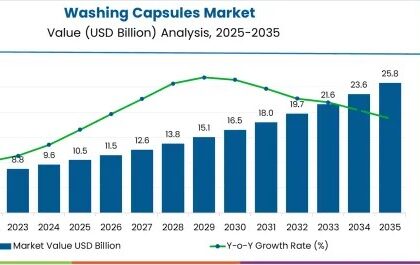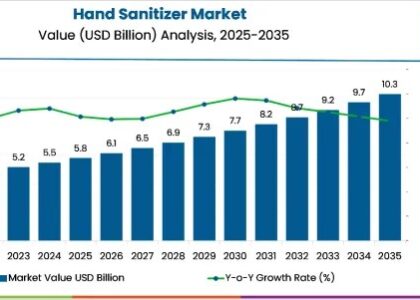
In 2023, the global reusable laparoscopic instruments market is expected to be worth USD 3.8 billion. The market is expected to reach USD 6.3 billion by 2033, expanding at a 5.1% CAGR throughout the forecast period. The reusable laparoscopic instruments market refers to the segment of the medical device industry that involves the manufacturing, distribution, and use of reusable instruments used in laparoscopic surgical procedures. Laparoscopy, also known as minimally invasive surgery or keyhole surgery, involves the use of small incisions and specialized instruments to access and operate on internal organs.
The reusable laparoscopic instruments market has witnessed significant growth in recent years, driven by several factors. The demand for minimally invasive procedures has been steadily increasing due to the advantages they offer, such as reduced postoperative pain, faster recovery times, shorter hospital stays, and improved cosmetic outcomes. Laparoscopic procedures have become the preferred choice for many surgeons and patients, leading to a rise in the use of reusable laparoscopic instruments.
One of the key drivers of market growth is the cost-effectiveness of reusable instruments. Compared to disposable alternatives, reusable laparoscopic instruments can be sterilized and used in multiple procedures, reducing the overall procedural costs for hospitals and surgical centers. This cost advantage has led to a widespread adoption of reusable instruments, especially in healthcare systems aiming to optimize healthcare expenditures.
Technological advancements have also contributed to the growth of the reusable laparoscopic instruments market. Instrument manufacturers have focused on improving the design, ergonomics, and functionality of reusable instruments to enhance surgical precision and patient outcomes. For example, advancements such as integrated sealing systems, ergonomic handles, and modular designs have increased the efficiency and usability of reusable instruments. Additionally, the growing prevalence of chronic diseases, such as obesity, gastrointestinal disorders, and gynecological conditions, has driven the demand for laparoscopic procedures. These conditions often require surgical intervention, and laparoscopy offers a less invasive option with shorter recovery times. As a result, the demand for reusable laparoscopic instruments used in these procedures has increased.
Key Takeaways from the Reusable Laparoscopic Instruments Market:
- The reusable laparoscopic instruments industry in the United States is predicted to reach USD 1.7 billion by 2033, increasing at a 4.4% CAGR.
- The reusable laparoscopic instruments industry in the United Kingdom is estimated to reach a market value of USD 326.4 million, expanding at a CAGR of 4.6% by 2033.
- During the forecast period, the reusable laparoscopic instruments industry in China is expected to reach a market share of USD 435.6 million, securing an 5.8% CAGR.
- The reusable laparoscopic instruments industry in Japan is predicted to reach USD 242.0 million by 2033, increasing at a 4.1% CAGR.
- South Korea’s reusable laparoscopic instruments industry is predicted to achieve a market value of USD 200.3 million, rising at a 5.3% CAGR during the forecast period.
- With a CAGR of 4.9% from 2023 to 2033, the trocars segment is expected to dominate the reusable laparoscopic instruments industry.
- With a CAGR of 5.5% from 2023 to 2033, the bariatric surgeries materials are expected to dominate the reusable laparoscopic instruments industry.
- With a CAGR of 4.9% from 2023 to 2033, the hospital is expected to dominate the reusable laparoscopic instruments industry.
Accelerated Market Demand: Find Comprehensive Insights and Trends in Our Full Report!
How Does the Competition Look in the Reusable Laparoscopic Instruments Market?
The reusable laparoscopic instruments sector is a very competitive one, with many firms fighting for market share. Several significant participants in this industry comprise Olympus Corporation, B Braun Melsungen AG, Intuitive Surgical, Medtronic, Stryker Corporation, Becton, Dickinson and Company, Johnson & Johnson (Ethicon), Medicalps, TEKNO-MEDICAL Optik-Chirurgie GmbH, KARL STORZ SE & Co. KG.
The main corporations are investing extensively in research and development efforts to develop inventive and creative products with improved reliability, efficacy, and cost. In order to meet changing consumer expectations, they are also concentrating on extending their product portfolio and bolstering their distribution strategies.
Industry-wide, strategic alliances and partnerships with other businesses are more frequent, enabling parties to capitalize on one another’s advantages and increase their market power.
Leading companies employ acquisitions and consolidation to expand into new markets and improve their market share. In emerging markets, particularly in China and India, the sector is rapidly growing.
Major corporations are developing regional production facilities and increasing their distribution networks to increase their presence in these areas. In order to gain a competitive edge, they are also focusing on providing customers in these markets with solutions that are affordable.
Key Developments in the Reusable Laparoscopic Instruments Market:
- In October 2022, Beckton Dickinson voluntarily recalled certain sterilization containers due to potential security flaws that could increase the risk of patient infections.
Segmentation Analysis of the Reusable Laparoscopic Instruments Market:
By Product:
- Laparoscopic Scissors
- Laparoscopic Hooks
- Grasping Forceps & Dissectors
- Trocars
- Laparoscopic Suction / Irrigation Devices
- Others
By Surgery:
- General Surgeries
- Bariatric Surgeries
- Colorectal Surgeries
- Urology Surgeries
- Gynecologic Surgeries
- Others
By End User:
- Hospitals
- Ambulatory Surgical Centers
- Specialty Clinics
By Region:
- North America
- Latin America
- Europe
- East Asia
- South Asia
- Oceania
- The Middle East & Africa
About Future Market Insights (FMI)
Future Market Insights, Inc. (ESOMAR certified, recipient of the Stevie Award, and a member of the Greater New York Chamber of Commerce) offers profound insights into the driving factors that are boosting demand in the market. FMI stands as the leading global provider of market intelligence, advisory services, consulting, and events for the Packaging, Food and Beverage, Consumer Technology, Healthcare, Industrial, and Chemicals markets. With a vast team of over 400 analysts worldwide, FMI provides global, regional, and local expertise on diverse domains and industry trends across more than 110 countries.
Contact Us:
Future Market Insights Inc.
Christiana Corporate, 200 Continental Drive,
Suite 401, Newark, Delaware – 19713, USA
T: +1-347-918-3531
For Sales Enquiries: sales@futuremarketinsights.com
Website: https://www.futuremarketinsights.com
LinkedIn| Twitter| Blogs | YouTube





